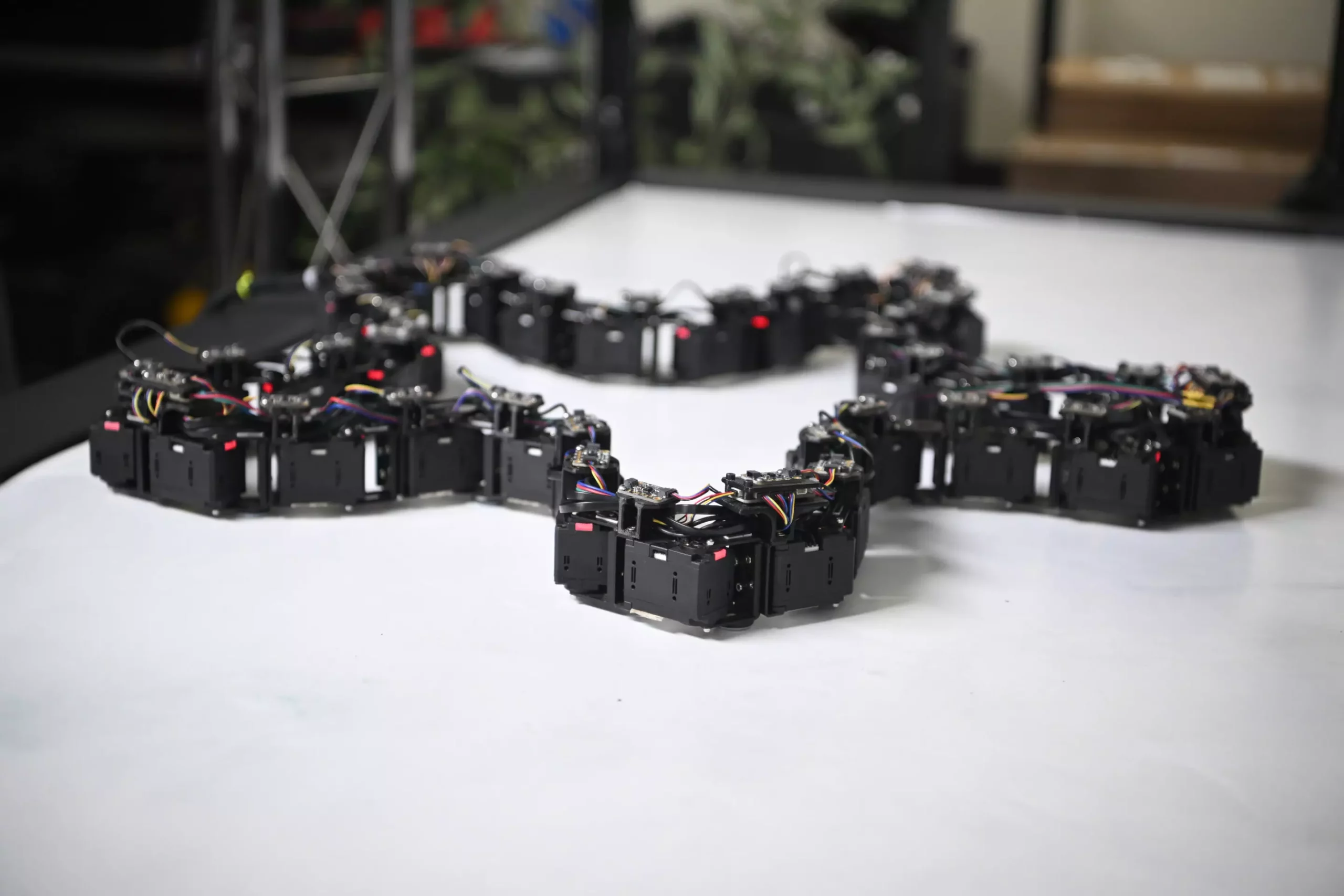West Virginia University (WVU) has embarked on an ambitious project that challenges conventional views on robotic design and autonomy. At the heart of this innovation is Loopy, a multicellular robot consisting of a ring of interconnected units that possess the ability to co-design their own shape and responses based on environmental stimuli. Unlike traditional robots that rely on preprogrammed instructions, Loopy is designed to operate without direct programming, embodying a shift toward a more organic approach to robotics. This exploration into robotic self-organization holds promise for applications in various fields, including environmental cleanup and responsive technology.
The Concept of Swarm Robotics
The inception of Loopy is rooted in the principles of swarm robotics—a concept inspired by biological organisms, such as ants and plants, that operate collectively to adapt to their surroundings. Lead researcher Yu Gu, a professor at the WVU Benjamin M. Statler College of Engineering and Mineral Resources, posits that Loopy serves as a counterpoint to the conventional “top-down” methods of robot design, where human engineers imbue machines with rigid programming frameworks. Instead, Loopy embraces a “bottom-up” approach, allowing the simple, decentralized interactions of its cells to result in complex, coordinated behaviors akin to those found in natural systems.
In essence, Loopy’s structure—comprising 36 identical, interlinked cells—enables it to embody traits associated with living organisms. Each cell is equipped with sensors that monitor joint angles and detect external factors such as light and temperature. This design not only enhances Loopy’s ability to sense its environment but also allows it to respond dynamically to various conditions, a capability that represents a significant leap forward in robotic autonomy.
To evaluate Loopy’s adaptability and problem-solving prowess, Gu’s team has established a robust experimental environment equipped with advanced motion capture systems and thermal imaging technology. Through testing under diverse and unpredictable conditions, including various surface materials and simulated contamination scenarios, the researchers aim to assess Loopy’s effectiveness in delineating hazardous areas.
Unlike conventional robotics, which often relies on a centralized decision-making process, Loopy’s decentralized nature invites spontaneous and potentially innovative solutions to challenges. The comparison of Loopy’s organic problem-solving abilities against more traditional methods—where human designers have complete access to sensor data—will provide valuable insights into the advantages and limitations of both approaches.
The implications of Loopy’s research extend beyond mere novelty; they pave the way for transformative applications that could redefine how robots are utilized in real-world scenarios. As Gu suggests, the emergent self-organization within multicellular robots like Loopy may offer unparalleled adaptability and resilience in unpredictable environments, distinguishing them from their more rigid counterparts.
For example, potential applications could range from adaptive leak sealing—where Loopy could autonomously form an effective barrier against spills—to interactive artistic installations that respond to audience movements or environmental changes. This versatility hints at a broader utility for robotics that integrates seamlessly with the natural world.
A Philosophical Shift: Nature-Inspired Robotics
Gu draws parallels between his robotics research and the principles of permaculture, highlighting a philosophy of working in harmony with nature rather than imposing artificial structures upon it. This perspective shifts the focus toward collaboration among three critical players: humans, the robotic entities, and their environments. Such a synergistic approach fosters a new understanding of robotics as part of a larger ecosystem, encouraging innovations that may not only improve functionality but also sustainability.
Additionally, the project takes inspiration from biological mechanisms found in nature—specifically, the intelligence exhibited by plants. Through chemical signaling and decentralized responses, plant roots epitomize coordinated behavior that results from individual components reacting to both internal and external conditions. By architecting Loopy to mirror these natural processes, Gu and his team seek to enhance the efficacy of robotic systems while fostering an ecosystem of collaborative intelligence.
As research on Loopy progresses, the findings could catalyze a significant evolution in the field of robotics. By blurring the lines between physical form, behavior, and environment, Loopy exemplifies the potential for a new generation of robots capable of adapting to complex, dynamic challenges. The journey taken by Gu and his team not only underscores the value of decentralized designs but also invites us to rethink our relationship with technology in a world that demands adaptability and resilience. The transformative possibilities of multicellular robotics could soon lead to applications that safeguard our environment, enrich human experiences, and redefine our understanding of autonomy in the robotic age.


Leave a Reply